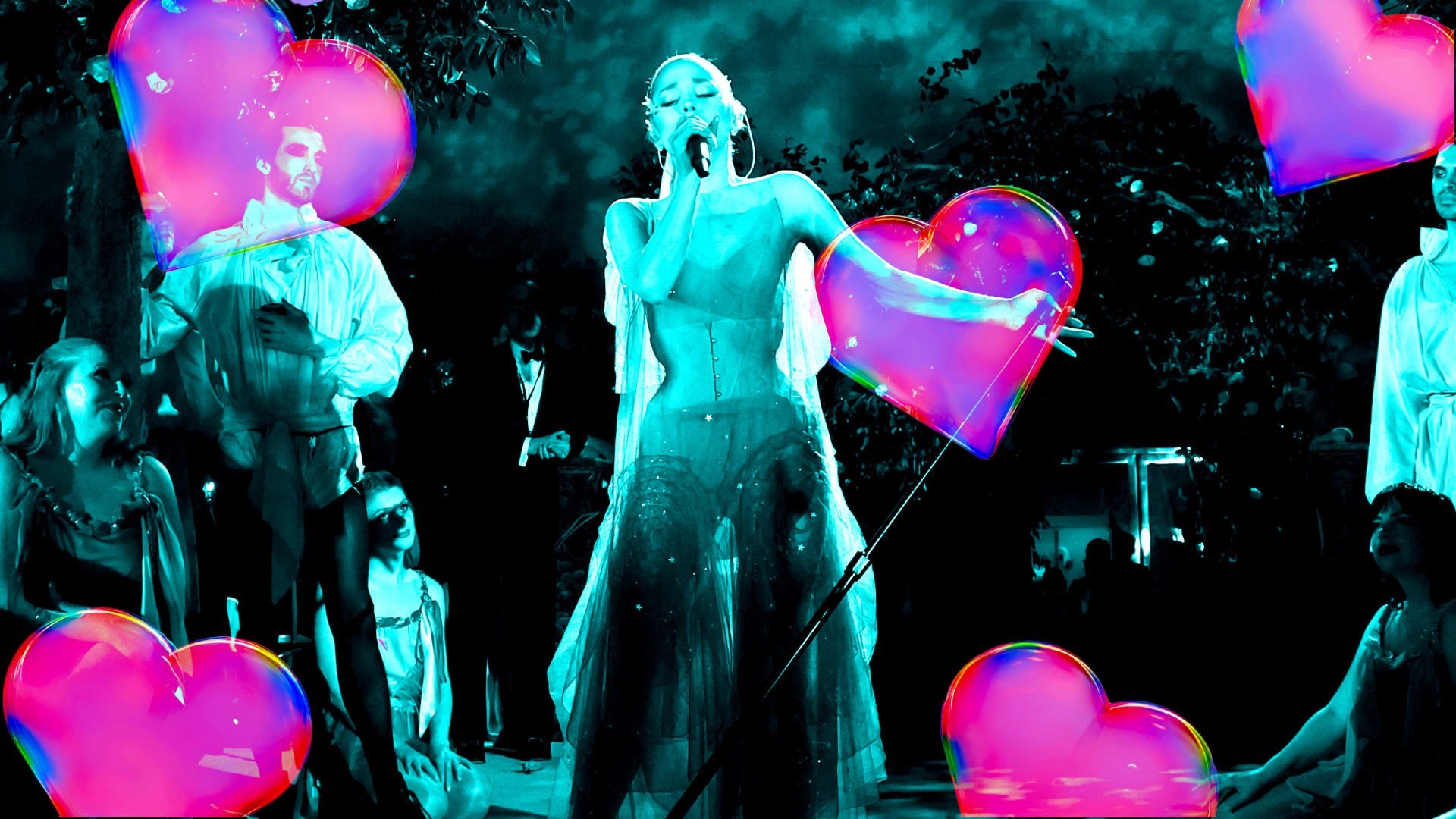Could Ariana Grande joining Weverse start the K-popification of American music?
Could Ariana Grande joining Weverse start the K-popification of American music?
As labels look for new ways to court high-spending superfans, they’re starting to embrace K-pop’s favorite fan-engagement app.
When Jungkook—a member of Korean pop group BTS—went to an Ariana Grande concert in 2019, he said it was partially to learn from her performance. Five years later, Grande has become the pupil of BTS by joining Weverse, the fan-engagement platform that’s helped the K-pop group grow the ranks of its global fandom, known as ARMY.
Weverse—owned by BTS management company Hybe—is the tool of choice for K-pop stars who want to connect with their avid fanbases. Fans can use the app to chat directly with artists and one another, watch live streams, and shop for merch. Though the app touts roughly 10 million monthly active users worldwide, its artist roster still skews heavily toward K- and J-pop—genres with the most heavily engaged (and highest-spending) fans. Grande’s decision, last month, to join Weverse is a sign that North American labels are trying to bring the K-pop magic stateside, using the tools that made bands like BTS global juggernauts.
Across the industry in 2024, music companies have been focused on courting superfans. Data firm Luminate, which supplies the data that powers the Billboard charts, outlined the importance of superfans—people who engage with an artist more than six different ways, from social media to concerts—to the overall health of the music economy. Though these listeners only make up about 18% of the overall U.S. market, they tend to spend 68% more on music and 126% more on merchandise than the average consumer each month, according to Luminate. The firm also found that Gen Z K-pop listeners spend about $24 a month on artist merch—almost three times that of the average U.S. listener—while Gen Z J-pop fans spend about $16 monthly.
Enter Weverse. The platform has been integral to the fan-service infrastructure that its parent company—Seoul-based entertainment conglomerate Hybe—has built around artists like BTS and other K-pop and J-pop stars. The app is now set to play a major role in 10-year partnership that Hybe recently inked with Universal Music Group, which gives UMG exclusive rights to distribute Hybe artists like BTS and NewJeans. UMG has also committed to bringing more of its artists to Weverse, starting with Grande. (Her former manager, Scooter Braun, is the CEO of Hybe America and oversees the UMG partnership.)
Some of the features within Weverse resemble existing social media: Artists can cross-post live performances and music videos, as well as offer updates about new releases and dispatches from the road. But a core part of the experience within the app’s artist-specific “communities” is the ability for fans to chat with one another as much as the artist. That, along with access to livestreams, has helped create an aura of exclusivity around Weverse.
“We don’t think we’re competing against X and Instagram,” says Weverse CEO Joon Choi. For one thing, there are fewer casual fans on Weverse than Instagram. But the app also makes shopping for merch, music, and digital content a bigger part of the fan experience than other social media platforms.
Choi says a “big chunk” of Weverse’s business comes from e-commerce. But as Weverse seeks profitability—the business operated at a $5.8 million loss in 2023—its scope is expanding. Weverse has spent the last several years adding more engagement tools, including creating Weverse Live, a livestream business built on the acquisition of VLive in 2022. Last year, it added Weverse DM, a subscription that allows fans to engage one-on-one with their favorite artist—paid for with an in-app currency.
“The future we see when we put a lot of emphasis on superfan cultivation is that there’s going to be a gradual transition between those physical and traditional business models [like e-commerce] into the new business models,” such as Weverse DM, Choi says.
Choi says he’s focused on adding North American and Latin American artists from UMG and beyond, with a particular focus on digitally savvy Gen Z musicians, as evidenced by the addition of Zoomer artists Conan Gray and thuy in March. But it remains an open question whether artists outside the world of K-pop will embrace the sort of fan service to which K-pop artists commit, which sees them opening up their lives to viewers in intimate and often unguarded ways (Jungkook notably once fell asleep in the middle of a livestream). Weverse’s version of artist engagement, Choi says, requires an embrace of content that’s less polished than what typically populates an Instagram feed.
“Whenever I meet the executives of U.S. labels, the first thing I tell them is that Weverse is not for every artist in your roster,” he says. The company doesn’t envision it as another passive feed for promotion. “If an artist’s first question to us is ‘Who would be posting things on Weverse for me?’ then this is not for that type of artist.”
ABOUT THE AUTHOR
(7)



